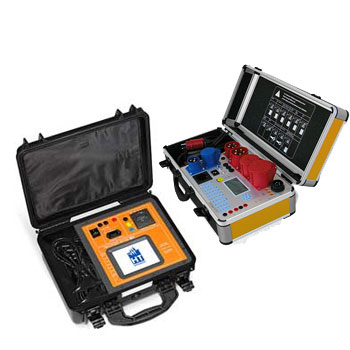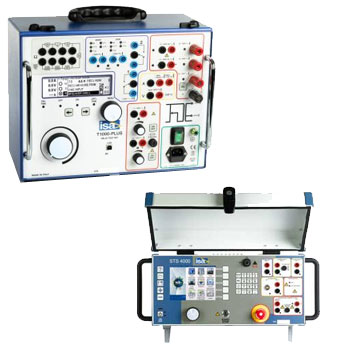
In modern industries, pressure and temperature sensors play a crucial role in monitoring and controlling processes. They need to be precise, reliable, and safe, especially in demanding environments such as the chemical, pharmaceutical, food, or energy sectors. To meet these requirements, numerous standards and certifications regulate both the quality and safety of these products.
This article provides a comprehensive overview of the key standards and certifications for pressure and temperature sensors. We not only highlight the requirements but also offer concrete application examples and illustrate the importance of these standards for the industry.
Why Are Standards and Certifications So Important?
Standards and certifications ensure that products comply with internationally recognized requirements. They not only protect users and operators but also guarantee regulatory compliance. For pressure and temperature sensors, standards are particularly important since measurement errors can lead to severe consequences such as production failures, environmental disasters, or even personal injuries.
Some advantages of standards and certifications:
-
Safety: Protection against malfunctions in critical applications.
-
Quality: Ensuring consistent and reliable performance.
-
Compliance: Facilitating adherence to legal requirements.
-
Trust: Enhancing customer and partner confidence in the products.
Table: Key Standards and Certifications
| Symbol | Standard/Certification | Application Area | Example Industries | Key Aspects |
|---|---|---|---|---|
 |
ISO 9001:2015 | Quality Management | All Industries | Product Quality and Customer Confidence |
 |
ATEX | Explosive Areas | Chemical, Oil and Gas | Protection in Hazardous Atmospheres |
 |
IECEx | Explosive Atmospheres | Chemical, Oil and Gas | International Safety |
 |
FDA | Hygiene Standards | Food, Pharmaceutical | Hygiene and Product Safety |
 |
RoHS | Environmental Friendliness | Electronics, Automation | Elimination of Hazardous Substances |
 |
ISO 14001:2015 | Environmental Management | Production, Manufacturing | Sustainability and Resource Efficiency |
 |
SIL | Functional Safety | Chemical, Energy, Automation | Safety Requirements |
1. ISO 9001:2015
ISO 9001 is an international standard for quality management systems. Manufacturers of pressure and temperature sensors must comply with this standard to ensure their products meet the highest quality requirements.
Application Example: A manufacturer of pressure sensors for the automotive industry uses ISO 9001 to ensure that every sensor produced meets the same high-quality standards. Regularly reviewing production processes helps minimize errors and increase customer satisfaction.
2. ATEX (Directive 2014/34/EU)
ATEX is a European directive that defines requirements for equipment and protective systems in explosive areas. Pressure and temperature sensors used in the chemical or oil and gas industries must be ATEX-certified.
Application Example: In a chemical plant, a temperature sensor is used to monitor heat generation in a reactor. Since the reactor operates with explosive gases, an ATEX-certified sensor is required. This sensor ensures that no sparks or overheating occur that could cause an explosion.
3. IECEx (International Electrotechnical Commission System for Certification to Standards Relating to Equipment for Use in Explosive Atmospheres)
IECEx is an internationally recognized certification system for equipment used in explosive atmospheres. It complements the ATEX directive and is often preferred by globally operating companies.
Application Example: A global oil and gas company operates extraction facilities in multiple countries. To ensure that pressure sensors meet uniform safety standards worldwide, the company opts for IECEx-certified sensors. These sensors are used in explosive areas and ensure the protection of employees and facilities globally.
4. FDA Compliance
The U.S. Food and Drug Administration (FDA) imposes strict requirements on devices and materials used in the food and pharmaceutical industries. Pressure and temperature sensors must be FDA-compliant to meet hygiene requirements.
Application Example: A temperature sensor is used in the pharmaceutical industry to monitor a sterilization process. This process requires extremely high temperatures to eliminate germs. The FDA-compliant sensor is made from materials that prevent contamination while meeting strict hygiene standards.
5. RoHS (Restriction of Hazardous Substances)
RoHS regulates the use of certain hazardous substances in electrical and electronic devices within the EU. Sensors must be RoHS-compliant to ensure environmentally friendly and safe products.
Application Example: A manufacturer of automation technology supplies pressure sensors to customers in the EU. To meet RoHS directive requirements, the company uses only materials free of lead and mercury. This reduces environmental impact and simplifies product recycling.
6. ISO 14001:2015
ISO 14001 specifies requirements for environmental management systems. Manufacturers producing pressure and temperature sensors often implement this standard to improve their environmental performance.
Application Example: A sensor manufacturer optimizes its energy consumption by designing production processes according to ISO 14001 guidelines. For example, excess heat from production is reused to heat other areas of the plant, reducing the company\u2019s overall emissions.
7. SIL (Safety Integrity Level)
The Safety Integrity Level (SIL) is used to evaluate the functional safety of systems. Sensors used in safety-critical applications must meet a specific SIL level.
Application Example: In a chemical production plant, a pressure sensor is integrated into an emergency shutdown system. This SIL-2-certified sensor detects dangerous pressure increases and automatically triggers a shutdown to prevent explosions or leaks. The certification ensures that the sensor reliably functions in critical situations.











































































































































































